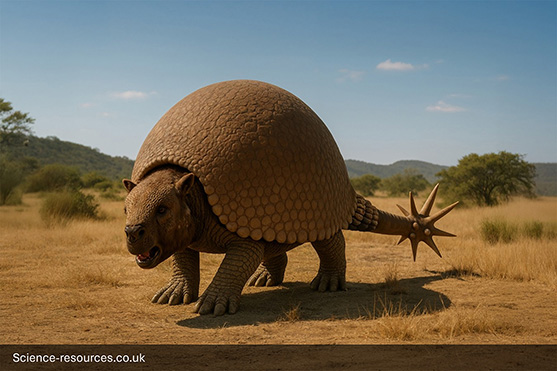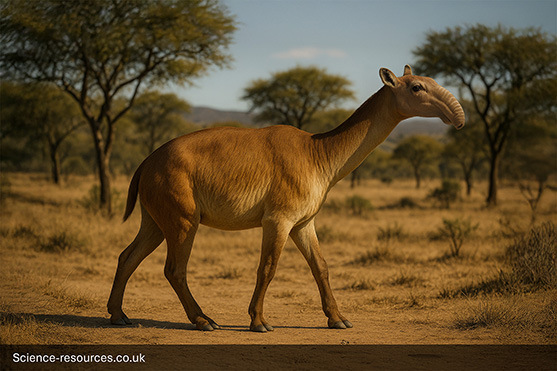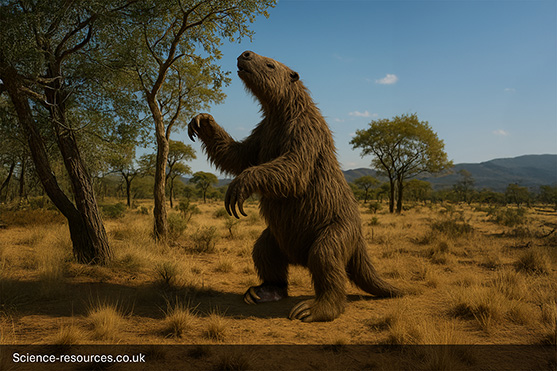Last updated: 4th August 2025
When They Lived: Pliocene
The Pliocene Epoch
The Pliocene Epoch occurred between 5.3 and 2.6 million years ago. The global cooling trend continued, and the Earth's climate became more similar to what we experience today, with more pronounced seasons. A major geological event during this period was the formation of the Isthmus of Panama, a land bridge that connected North and South America for the first time. This new land bridge caused what is known as the Great American Interchange. Animals from North America, such as saber-toothed cats, wolves, and bears, moved south, while South American animals, like glyptodonts and ground sloths, moved north. This interchange led to many extinctions as new predators and competitors were introduced to different continents. It was also during the Pliocene that the first human ancestors, early hominins like Australopithecus, began to walk upright in Africa. The Pliocene was a transition period, leading directly into the dramatic climate shifts of the upcoming Ice Age.
Featured animals from this time:
Doedicurus
Doedicurus was a heavily armored mammal related to armadillos, living in South America during the Ice Age. It had a large, domed shell and a spiked tail used for defense against predators.
Macrauchenia
Macrauchenia was a long-necked, hoofed mammal from South America, resembling a camel with a short trunk. It lived from the Miocene to the Ice Age and grazed in open grasslands.
Megatherium
Megatherium was a giant ground sloth from South America that lived during the Pleistocene. It had massive claws and a bulky frame, feeding on leaves and possibly standing upright to reach higher branches.
You may also be intrested in:
- Extinct Animals: A-Z
- Dinosaurs: A-Z
Tags: Hyaenodon, Entelodont, Gastornis, Embolotherium, Eocene epoch
© 2012 science-resources.co.uk. All rights reserved | Design by W3layouts
When They Lived: Pliocene
The Pliocene Epoch
The Pliocene Epoch occurred between 5.3 and 2.6 million years ago. The global cooling trend continued, and the Earth's climate became more similar to what we experience today, with more pronounced seasons. A major geological event during this period was the formation of the Isthmus of Panama, a land bridge that connected North and South America for the first time. This new land bridge caused what is known as the Great American Interchange. Animals from North America, such as saber-toothed cats, wolves, and bears, moved south, while South American animals, like glyptodonts and ground sloths, moved north. This interchange led to many extinctions as new predators and competitors were introduced to different continents. It was also during the Pliocene that the first human ancestors, early hominins like Australopithecus, began to walk upright in Africa. The Pliocene was a transition period, leading directly into the dramatic climate shifts of the upcoming Ice Age.
Featured animals from this time:
Doedicurus
Doedicurus was a heavily armored mammal related to armadillos, living in South America during the Ice Age. It had a large, domed shell and a spiked tail used for defense against predators.
Macrauchenia
Macrauchenia was a long-necked, hoofed mammal from South America, resembling a camel with a short trunk. It lived from the Miocene to the Ice Age and grazed in open grasslands.
Megatherium
Megatherium was a giant ground sloth from South America that lived during the Pleistocene. It had massive claws and a bulky frame, feeding on leaves and possibly standing upright to reach higher branches.
Tags: Hyaenodon, Entelodont, Gastornis, Embolotherium, Eocene epoch
© 2012 science-resources.co.uk. All rights reserved | Design by W3layouts


